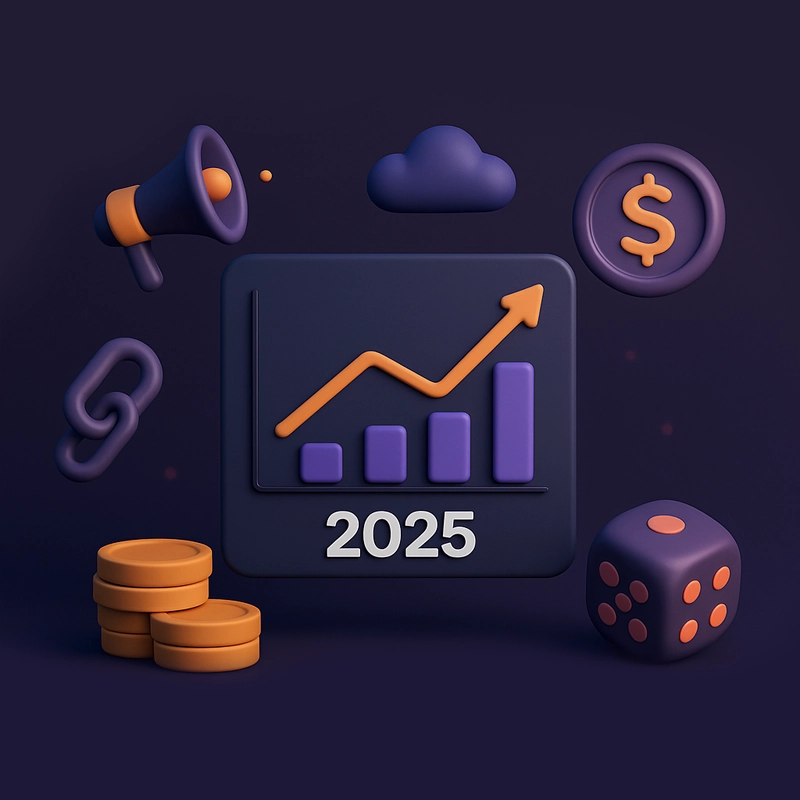1. Third-party cookies: strategy reset, not “RIP cookies”
Google stepped back from killing third-party cookies outright in Chrome in 2025, after years of Privacy Sandbox delays and competition concerns from the UK CMA. That means cookies are not disappearing overnight, but Chrome is still pushing privacy controls and Sandbox APIs—and testing features like IP Protection. [i]
So what?
- Keep cookie-based measurement for now, but build a first-party data layer (accounts, email capture, consented analytics).
- Start testing Sandbox-friendly attribution and server-side tagging so you’re not stuck if policies tighten again.
Do this next:
- Offer logged-in features (favorite casinos, saved bonuses, “compare” lists) to collect first-party signals.
- Stand up server-side GTM and model conversions using your own events (click > signup > FTD > retention).
2. Core Web Vitals: INP is now the responsiveness metric that counts
Google replaced FID with Interaction to Next Paint (INP) as a Core Web Vital in March 2024; Google still says good CWV aligns with what core ranking systems reward. In practice, snappy interaction now matters more than ever. [i]
3. EU compliance squeeze: fewer ads, stricter channels, higher risk
- Netherlands (KSA): broad ban on untargeted online gambling ads since July 2023; KSA can pursue “chain enforcement,” including affiliates facilitating illegal gambling. [i]
- Germany (GGL): regulators banned streamer advertising routes to protect minors; courts backed GGL’s hard line. Google also tightened its Germany gambling ads policy for operators and affiliates. [i]
- UK: operators remain responsible for affiliate marketing under CAP/ASA rules; affiliate content often must be labelled as ads. The Gambling Commission reiterates socially responsible marketing obligations. [i]
So what?
- “Spray-and-pray” traffic (influencers, broad programmatic) can get you delisted or de-indexed in regulated GEOs.
- Operators push liability downstream—your compliance ops must be real, not decorative.
Do this next:
- Implement geo-aware ad logic (show/hide offers per jurisdiction, auto-insert RG disclaimers).
- Store license metadata per brand (schema + visible labels) and block any operator lacking valid status in that GEO.
- Add affiliate-content disclosures automatically for UK traffic (CAP-compliant).
What Will Change Next (2025–2027): Practical Forecasts You Can Act On
A) “Event-level” performance will be the edge
Top affiliates already pipe event-level data (click > registration > FTD > 30/90-day value) back into content and UX. As privacy UX evolves in Chrome and platforms keep auditing tracking, your own event stream becomes the source of truth. (Chrome privacy changes continue, even as the cookie kill is paused/pivoted.) [i]
Action:
- Standardize events across WordPress with a single dataLayer schema; maintain offer-level IDs end-to-end so you can attribute by brand × page × position.
B) First-party identity + memberships
Because cookie futures remain uncertain, the durable advantage is first-party identity (accounts, newsletters, saved lists). Even if cookies persist, owned audiences outperform rented ones.
Action:
- Launch friction-light accounts (passkeys/social login), email capture on exit-intent, and member-only tools (bonus trackers, payout alerts).
C) Compliance-as-code
Expect more automatic checks: GEO fencing, age gating, content labeling, and stream/influencer channel restrictions (DE trend). Affiliates with tooling will survive audits; manual ops won’t. [i]
Action:
- Build a policy engine in your CMS: rules per GEO decide which brands render and which disclaimers/labels attach. Log every decision for audit trails.
D) Speed budgets & JS sobriety become table stakes
With INP live, sites overloaded with widgets and tag soup will keep sliding. Lightweight stacks (headless or lean WP theme + minimal JS) will win. [i]
Action:
- Set a JS budget (e.g., <150 KB gzipped on key templates). Replace client-side tables with server-rendered HTML, hydrate only the filter controls.
E) Channel mix shifts: creators, communities, and owned media
As some ad routes shrink (e.g., streamer bans, broad untargeted bans), owned media + creator partnerships with strict compliance will outperform generic display. (We’ve seen regulators focus on influencer pathways already.) [i]
Action:
- Sign whitelisted creators with contractually enforced GEO/age filters; build community content (Discord, long-form video) that can be audited and versioned.
A Concrete 90-Day Plan (Use This)
- Telemetry: implement event schema (click, reg, FTD, N-day value) on top 50 pages; unify IDs across links/offers.
- Policy engine: per-GEO rules in WP (brand allowlist, disclaimers, ad labels); block non-licensed operators automatically in NL/DE/UK. [i]
- Speed: ship a lean template for “Top Casinos” and “Bonus” pages—no builders, no third-party tables; target Good INP per web.dev. [i]
- First-party data: launch accounts (save favorites/alerts), newsletter with GEO segmentation, and consented analytics.
- Attribution sanity: server-side tagging + modeled conversions; QA against operator back-office to reduce variance.
- Creator pilot: 3 compliant creators with unique codes; measure CAC/LTV vs. SEO.
The New Shape of iGaming Affiliates
The next few years won’t kill affiliate marketing, but they’ll expose who’s been running on autopilot. The winners will be the ones who treat this business like engineering — measurable inputs, feedback loops, compliance built into code, and design tuned for milliseconds.
Affiliates that still rely on template reviews, anonymous traffic, and random banners will slowly disappear under the weight of regulation and faster competitors.
If you can own your data, automate your compliance, and keep your platform technically lean, you’ll have something rare: a system that survives policy shifts and Google updates without needing to start from zero.
2025 isn’t about getting bigger; it’s about getting tighter — fewer tools, better signals, and workflows that run even while you sleep.
That’s the future of iGaming affiliate marketing. It’s not theory anymore — it’s code, compliance, and constant iteration.
